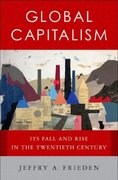Q1. Explain in your own words why the following LRAC curve could only have one producer in a market if market demand were less than 10,000 units. (Imagine if demand were 9,000 units. What would the cost be for a second firm trying to enter the market? Could it compete? What would its costs be in relation to the established firm?) What is the economic term for this type of market? Alternatively, consider a situation, again in the setting of Exhibit 9-9a, where the bottom of the long-run average cost curve is 10,000, but total demand for the product is only 5,000. (For simplicity, imagine that this demand is highly inelastic, so that it does not vary according to price.) In this situation, the market may well end up with a single firm-a monopoly-producing all 5,000 units. If any firm tried to challenge this monopoly while producing a quantity lower than 5,000 units, the prospective competitor firm would have a higher average cost, and so it wouldn't be able to compete in the longer term without losing money. A firm producing 10,000 units could produce at a lower average cost-but it could only sell 5,000 units, and so it would lose money as well. Chapter 11 discusses the situation of a monopoly firm that finds itself in this situation. Dollars ($) 500 -+- 5,000 10,000 15,000 20,000 Output (a) LRAC curve with a clear minimum point Q2. Using the following exhibit explain why the long run price in this market will end up at $3.20. Average cost Marginal cost Average cost Marginal cost Marginal Cost/Marginal Revenue (S -NWAMO NOD Marginal Cost/Marginal Revenue ($) Marginal revenue Marginal revenue Total cost Total revenue - Total cost 10 20 30 40 50 60 70 80 90 100 0 10 20 30 40 50 60 70 80 90 100 Quantity (flash drives) Quantity (flash drives) (a) Price Intersects marginal cost above the average cost curve. (b) Price Intersects marginal cost on the average cost curve. At a price of $4, price Is at a level where producing at the quantity At a price of $3.20, the price is now at a level where producing at the where P - MC leads to a price that is above average cost. In this quantity where P - MC leads to a price that is equal to the average case, the firm is earning a profit. Total revenue is the quantity of cost. Total revenue is now a quantity of 70 times a price of $3.20. To- 80 times the price of $4, or $320, shown by the overall shaded tal cost is the same: a quantity of 70 times an average cost of $3 20. box. Total cost is the quan s the quantity of 80 times an average cost of $3.30 Zero profit is being earned in this situation. or $264, shown by the bottom shaded box. The leftover rectangle where total revenue exceeds total cost is the profit earned. Total Fixed Marginal | Average Quantity Cost Cost Cost Cost Marginal cost Average cost $62 $62 $90 $28 $2.80 $9.00 $110 $62 $48 $2.00 $5.50 Marginal Cost/Marginal Reverie ( LOSS (or negative $126 $62 $1.60 $4.20 prant)- 40 $144 $62 $82 $1.80 $3.60 Marginal $166 $62 $104 $2.20 $3.32 revenue 60 $192 $62 $130 $2.60 Total revenue $224 $62 $162 $3.20 $3.20 $62 10 20 30 40 50 60 70 80 90 100 $264 $202 $4.00 $3.30 90 $324 $62 Quantity (flash drives) $262 $6.00 $3.60 100 (c) Price Intersects marginal cost below the average cost curve. $404 $62 $342 $8.00 $4.04 At a price of $2.20, when the firm produces at a quantity where P . MC. the price is below average cost. Here, the firm is suffering losses. Total costs are the large rectangle with a quantity of 50 and a price of $3.32, for total costs of $168. Total revenues are a quantity and a price of $2 20, or $110, shown by the smaller shaded box. The leftover rectangle on top thus shows the losses; that is, the amount that total cost exceeds total revenue. Q3. Using exhibit 10-3 (above), in the long-run at the profit maximizing point, or profit- maximization condition, what can be said for the marginal cost, the marginal revenue and price in this example? In the long run, explain why this is true for all perfectly competitive firms







